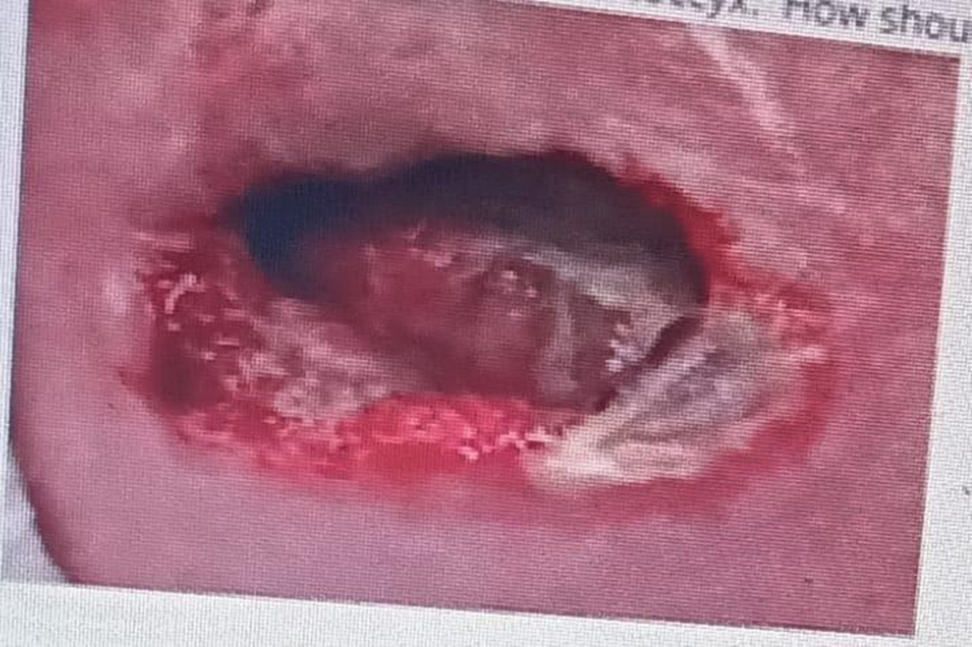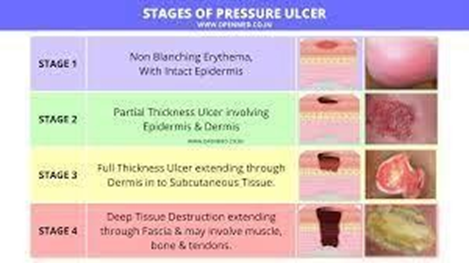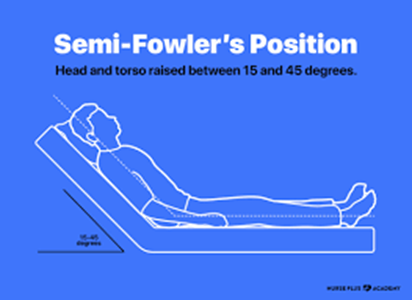A nurse begins her shift and is completing her first turn of the night. While turning, she also assesses her patient's skin. When she turns her patient she finds the following wound on her coccyx. How should she document the following wound? (The base of the wound is muscle, with some subcutaneous tissue)

Stage III Pressure Ulcer
Stage IV Pressure Ulcer
Stage II Pressure Ulcer
Unstageable Ulcer
The Correct Answer is B
Choice A rationale: Stage III pressure ulcers involve full-thickness tissue loss with visible fat but do not extend to the underlying muscle.
Choice B rationale: Stage IV pressure ulcers involve full-thickness tissue loss with exposed muscle, bone, or other structures.
Choice C rationale: Stage II pressure ulcers involve partial-thickness skin loss but do not extend into the deeper layers.
Choice D rationale: Unstageable ulcers have a base covered by slough or eschar, making it difficult to assess the depth of tissue involvement. In this case, the wound's base is described as muscle, indicating a stage IV pressure ulcer.

Nursing Test Bank
Naxlex Comprehensive Predictor Exams
Related Questions
Correct Answer is ["B","C","E"]
Explanation
Choice A rationale: A physician's order is typically required for a digital removal of a fecal impaction.
Choice B rationale: Using a lubricated index finger to break up some of the mass and remove it is a correct step in the procedure.
Choice C rationale: Sterile gloves are not required for a digital removal of a fecal impaction. Clean gloves are generally sufficient.
Choice D rationale: The mass may need to be broken up into smaller pieces for removal, rather than being removed as a whole.
Choice E rationale: The patient is usually positioned in a side-lying position for comfort and accessibility during the procedure.
Correct Answer is B
Explanation
Choice A rationale: Protective supine positioning is not ideal for managing dysphagia or facilitating swallowing.
Choice B rationale: Semi-Fowlers positioning, with the head of the bed elevated at a 30 to 45-degree angle, is often recommended for clients with dysphagia. This position helps prevent aspiration during eating and promotes effective swallowing.
Choice C rationale: Low-Fowlers and Fowlers positions may not be as effective in preventing aspiration during eating as the Semi-Fowlers position.
Choice D rationale: Fowlers positioning alone may not be sufficient for managing dysphagia; Semi-Fowlers is a more specific recommendation.

Whether you are a student looking to ace your exams or a practicing nurse seeking to enhance your expertise , our nursing education contents will empower you with the confidence and competence to make a difference in the lives of patients and become a respected leader in the healthcare field.
Visit Naxlex, invest in your future and unlock endless possibilities with our unparalleled nursing education contents today
Report Wrong Answer on the Current Question
Do you disagree with the answer? If yes, what is your expected answer? Explain.
Kindly be descriptive with the issue you are facing.
